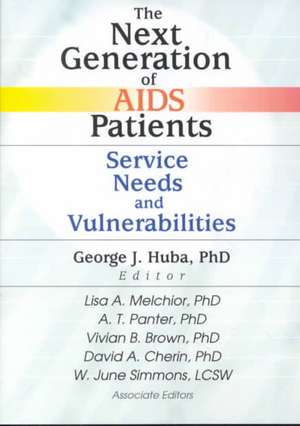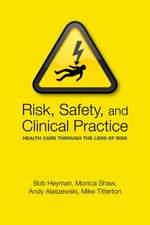The Next Generation of AIDS Patients: Service Needs and Vulnerabilities
Autor George J. Huba, Vivian Brownen Limba Engleză Paperback – 24 mai 2001
In the past ten years, the treatment and epidemiology of AIDS have changed, and HIV/AIDS services must also change. The Next Generation of AIDS Patients suggests new ways to find and care for persons living with AIDS, not just by offering traditional medical treatment but by delivering needed support services as well.
This landmark book defines the startling shift in demographics of this phase of the epidemic. The new AIDS patients have different problems than the white gay men who were strongly affected in the early days of the disease: some are substance abusers or sex workers or their partners, and many have children. Clients who are homeless, poorly educated, not native English speakers, or uninsured have overwhelming social support needs and need extra help to obtain their medical requirements. The Next Generation of AIDS Patients offers detailed analyses to help you determine clients’needs and vulnerability levels, so you can provide complete biopsychosocial services. In addition, the original empirical research in this book reveals which programs deliver the best outcomes for various client populations. The Next Generation of AIDS Patientssupplies you with an effective data modeling approach for determining levels of vulnerability and need, and discusses such vital issues as:
- identifying and overcoming barriers to HIV care
- engaging and retaining in care individuals with high levels of unmet need
- delivering services to diverse minority populations, substance abusers, homeless people, and those who live in rural areas
- client satisfaction in community service organizations
Preț: 206.09 lei
Preț vechi: 274.09 lei
-25% Nou
Puncte Express: 309
Preț estimativ în valută:
39.43€ • 41.18$ • 32.56£
39.43€ • 41.18$ • 32.56£
Carte tipărită la comandă
Livrare economică 15-29 aprilie
Preluare comenzi: 021 569.72.76
Specificații
ISBN-13: 9780789013620
ISBN-10: 0789013622
Pagini: 146
Dimensiuni: 156 x 216 x 13 mm
Greutate: 0.27 kg
Ediția:1
Editura: Taylor & Francis
Colecția Routledge
Locul publicării:Oxford, United Kingdom
ISBN-10: 0789013622
Pagini: 146
Dimensiuni: 156 x 216 x 13 mm
Greutate: 0.27 kg
Ediția:1
Editura: Taylor & Francis
Colecția Routledge
Locul publicării:Oxford, United Kingdom
Cuprins
Contents
- Editorial
- Foreword
- Introduction: Evaluating HIV/AIDS Treatment Programs for Underserved and Vulnerable Patients, Innovative Methods and Finding
- Finding the Underserved: Directions for HIV Care in the Future
- Unmet Needs in Groups of Traditionally Underserved Individuals with HIV/AIDS: Empirical Models
- Perceived Barriers to Receiving HIV Services in Groups of Traditionally Underserved Individuals: Empirical Models
- Satisfaction with Innovative Community and University Health Clinic Programs for Groups of Traditionally Underserved Individuals with HIV/AIDS: Empirical Models
- Satisfaction with Services in Innovative Managed Care Programs for Groups of Traditionally Underserved Individuals with HIV/AIDS: Empirical Models
- Index
- Reference Notes Included
Notă biografică
George J.Huba, Lisa A. Melchior, A. T. Panter, Vivian B. Brown, David A. Cherin, W. June Simmons
Descriere
In the past ten years, the treatment and epidemiology of AIDS have changed, and HIV/AIDS services must change as well. The Next Generation of AIDS Patients suggests new ways to find and care for persons living with AIDS, not just by offering traditional medical treatment but by delivering needed support services as well. It offers an effective data modeling approach for determining levels of vulnerability and need as well as solid advice on identifying and overcoming barriers to HIV care and delivering services to diverse minority populations, substance abusers, homeless people, and those who live in rural areas.









